Make protein powder at home with just one ingredient and 15 minutes. It’s naturally vegan, allergen friendly, and great to add to smoothies, baked goods, and sauces. You can even customize it with additional flavors.
This post may contain affiliate links. Read my policy page for more information.
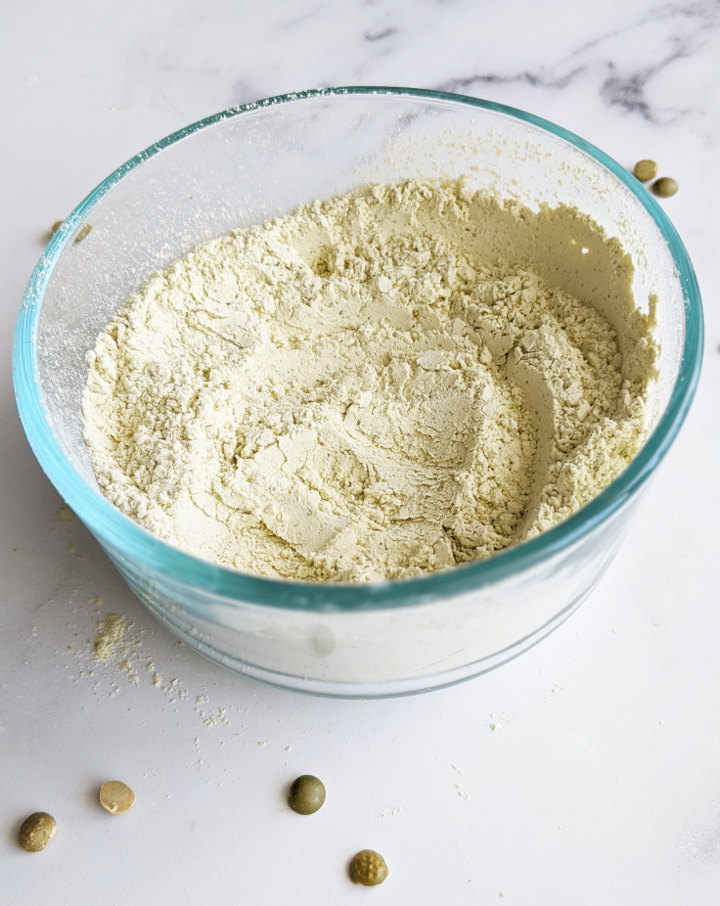
Did you know you can make your own protein powder at home? It’s actually a really simple process that I only just recently discovered when I had a bag of peas I needed to use up before my move and someone recommended me this video from Comer Vegano. I never realized how simple it can be. In this article I’ll show you just how easy it is and how to use it in a variety of ways.
I don’t normally consume protein powders because I don’t find them all that necessary for the price, but now that I know how to make my own at home, I think I’ll be enjoying them a lot more.
As a vegan, one might think that it is difficult to get enough protein through diet without supplementing. The truth is that protein is not that difficult to acquire if certain criteria are met. If you are eating a mostly whole foods plant-based diet and consuming enough calories for your energy and activity requirements, then it’s virtually impossible to not get enough protein unless there’s an underlying health condition.
Our protein requirements are not as much as the protein supplement companies would have us believe. In fact, the Recommended Dietary Intake of protein for an average adult is .36 grams of protein per pound of body weight or 0.8 grams of protein per kilogram of body weight.
That’s around 50 grams of protein per day for the average sedentary person. It may not seem like much but that’s two standard deviations above the minimum to prevent protein deficiency. So don’t worry, you won’t be withering away.
If you are more active and do weight lifting or endurance exercise you may need more protein. Some suggest increasing it to .65 grams of protein per pound of body weight. Either way, the rule above regarding eating enough on a whole foods plant-based diet should cover your protein needs.
However, from time to time we run short on time and need something to keep us full in between meals. We also may have physique goals that require higher protein intakes. That’s when protein powders can be beneficial.
You can actually make your own DIY protein powder out of several things: nuts, seeds, whole grains, beans, etc. But today I’m going to show you how to make it out of peas.
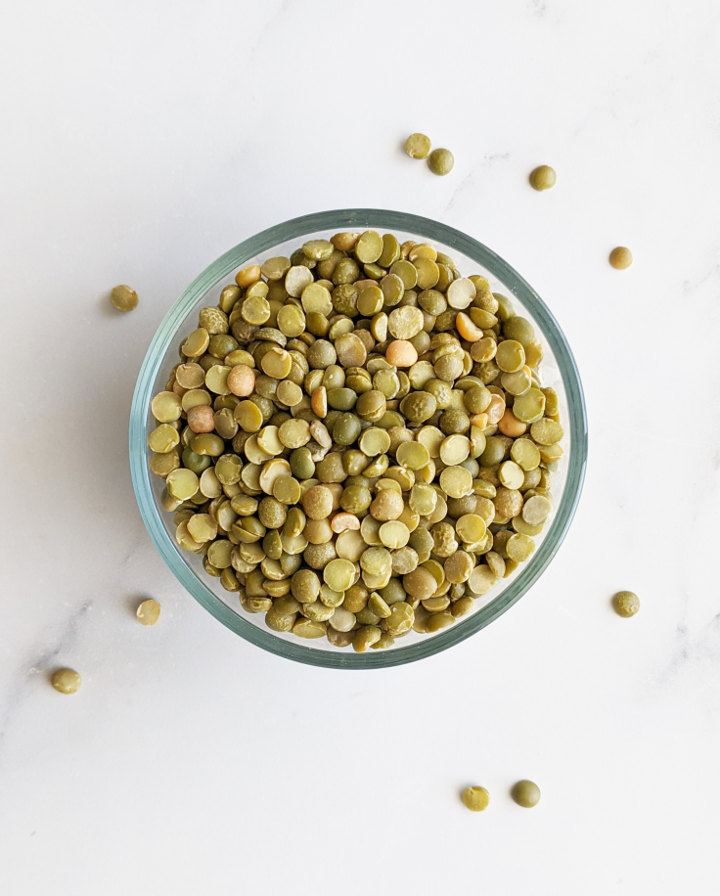
Health Benefits of Peas
Peas are a lesser known source of protein but it’s becoming more popular as more and more pea protein products and supplements are coming to the market. Peas are a great option for many because they are allergen friendly and easy to digest.
One cup of cooked split peas contains over 16 grams of protein. It’s also high in minerals such as Iron, Zinc, Manganese, Phosphorus, and Copper. It’s high in folate, the natural form of folic acid, and contains several B vitamins.
Peas also contain over 20 grams of fiber in one cup! Most Americans do not even get that much in one day even though the Daily Recommended Intake of Fiber on average is around 30 grams. Higher fiber intake can help lower cholesterol and is beneficial in managing blood-sugar.
And contrary to popular belief, there’s no such thing as an incomplete protein. All plants contain all nine essential amino acids. The term “incomplete protein” really just means that one or more of the essential amino acids are present in limited amounts. For peas, that is Methionine but this should not be a concern as long as you are diversifying your protein sources through out the day. Check out this article for the top plant-based sources of protein for a balanced vegan diet.
Antinutrients in Peas
A concern when it comes to consuming legumes are the presence of antinutrients. These are essentially compounds that block the absorption of other nutrients.
The main antinutrients found in peas are phytic acid and lectins which may interfere with the absorption of minerals such as iron, calcium, zinc, and magnesium. These can also affect digestion and cause bloating.
Levels of antinutrients are lower in peas than other legumes so for the average healthy person, they are not a concern. They are unlikely to cause problems unless eaten in large quantities.
In the case of pea protein powder, the quantity is small enough to not cause issues but if you notice any discomfort with digestion you can start with a smaller amount. Two tablespoons per serving is a good starting point.
Best Type of Peas for Protein Powder
There are several different types of peas to make protein powder with but today we’ll be making it with dry split peas. I’ve seen it made by using green peas, yellow peas, or even frozen peas, but these require an extra step of dehydrating.
Split peas, also known as field peas, are already dry which makes the process a lot faster. Field peas are dried with the outer shell removed, revealing the two halves. Dried peas will keep for several months if stored in an airtight container in a cool, dry, dark place such as a pantry. If you need to store them for longer, you can keep them in the refrigerator.
These are the same type of peas used to make commercial protein powders, however, they typically extract the starches and fiber, leaving a higher concentrated protein powder.
Our homemade version will not have as high amount of protein per scoop, but has the added benefit of additional fiber and nutrients that would otherwise have been removed.
How Much Protein is in Pea Protein Powder?
One cup of dry split peas has around 45 grams of protein. When processed into a fine powder, it makes just over one cup of protein powder.
Most commercial brand serving sizes are equivalent to 1/4 cup and contain around 20 grams of protein.
Based on this example, one serving of our homemade pea protein powder contains just over 11 grams of protein.
What you need
To make your own pea protein powder you will need a few things:
- A high-speed blender, food processor or spice grinder.
- A sieve, or fine mesh strainer to separate the flour/powder from any larger pieces.
- An airtight storage container.
How to Make
The process I’m going to show you is essentially making a pea flour because we are not extracting anything. We are simply processing the peas into a flour.
This process is the simplest because there is no need to presoak, sprout, or cook. In fact, you can eat raw split peas. That’s why we can make a DIY protein powder that can be used in smoothies and other raw foods like energy balls. One word of caution: You cannot do this with all legumes, especially kidney beans, as they can make you sick if not cooked first.
Here’s the easy process:
1. Place peas in your blender or food processor. I use a Ninja blender but any high-speed blender or food processor will do. Make sure whatever appliance you use is completely dry. You do not want any moisture in it or you will end up with a paste instead of a flour.
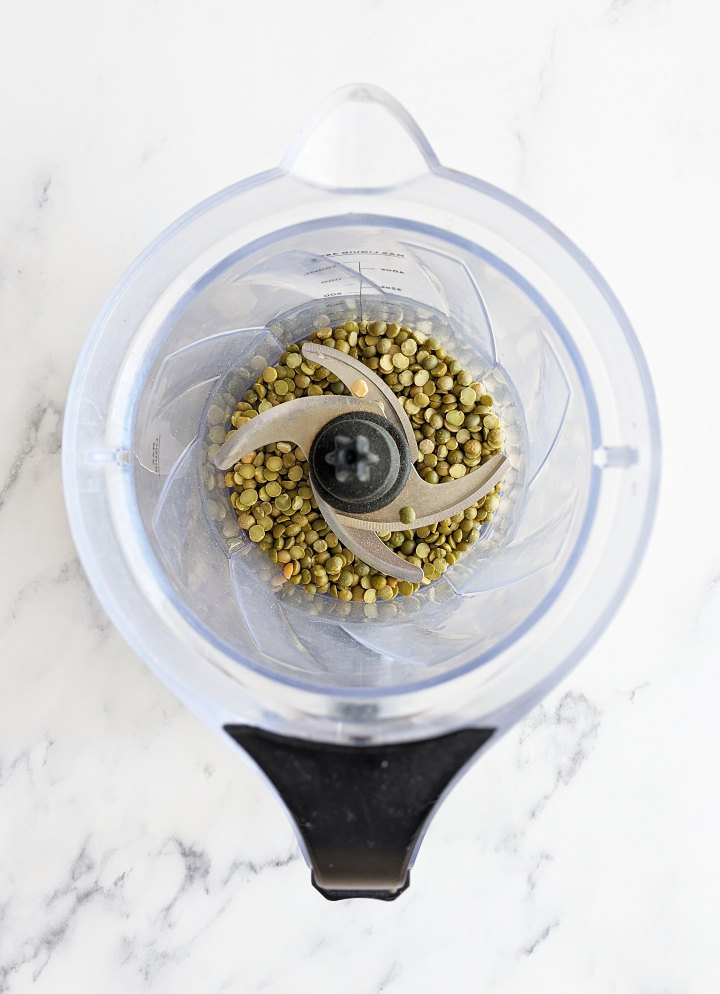
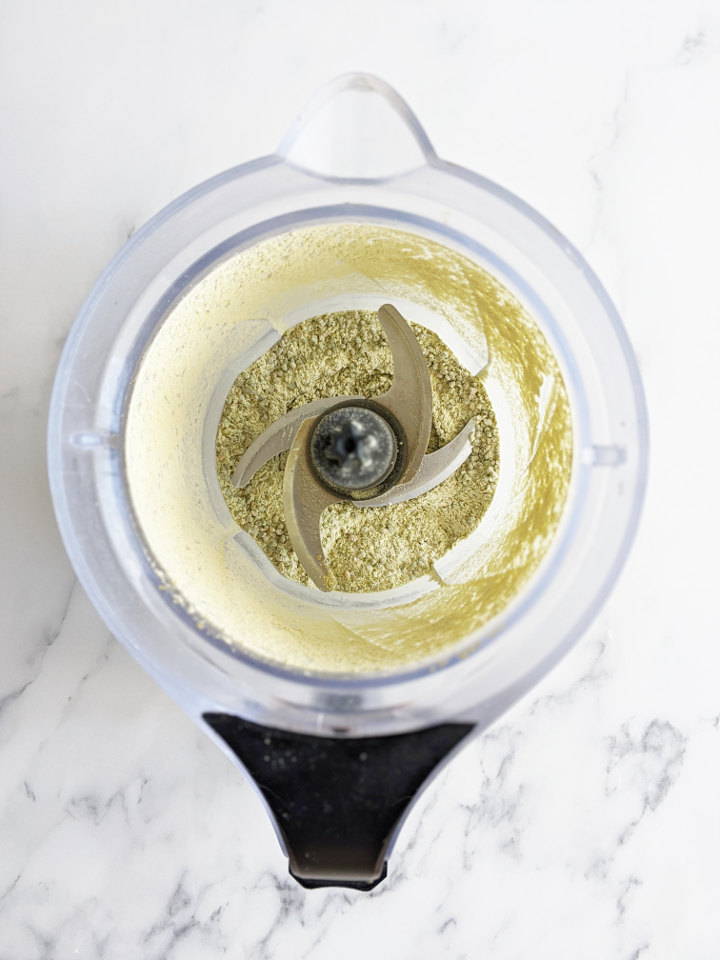
2. Blend for around 3 minutes. Make sure any openings are covered while it’s running so you don’t have pea flour wafting out of it.
3. Sift the processed peas over a bowl to separate the powder from any of the larger pieces.
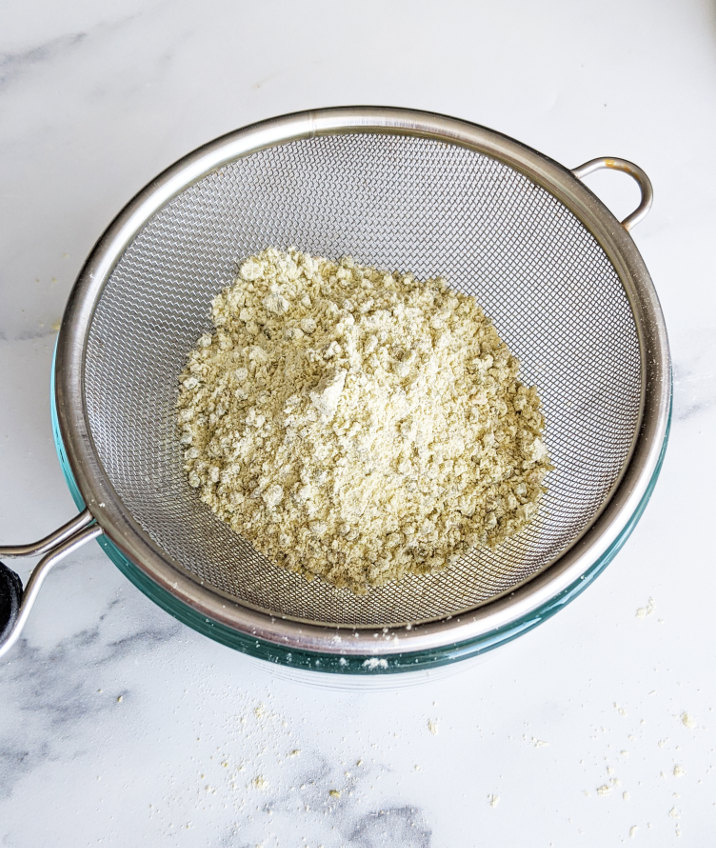
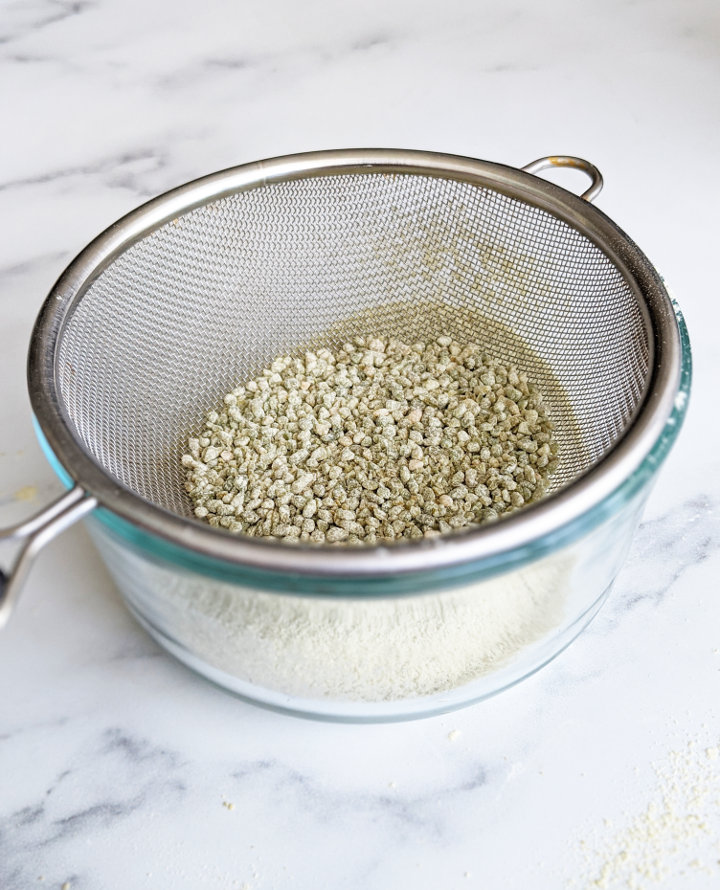
4. Reprocess the larger pieces in your blender for another 3 minutes and repeat step 3.
5. You now have pea protein powder!

Any leftover larger pieces can be ground using a coffee or spice grinder, or throw into a soup or stew so they don’t go to waste. They’re so small that they should cook quickly.
How to Store
To keep your homemade pea protein powder fresh for as long as possible, you’ll want to store it in an airtight container in the refrigerator. It should last in there at least one week but you can also freeze for longer. No need to thaw, it should stay as a powder when frozen.
How to Use
You can use pea protein powder in a number of things. Adding it to smoothies is perfect because it bulks up the smoothie, making it more filling and satiating. Usually 2-4 tablespoons is a good quantity to add to smoothies depending on your protein needs and taste preferences.
You can also use it in baked goods. Replace a little of the flour with pea protein. You can do the same with things like pancakes or waffles as well.
It can also be added to soups or sauces as a thickener.
Or add it to these No Bake Granola Bars or a bowl of oatmeal for some extra protein.
Why Not Just Buy Store-Bought Protein Powder?
You certainly can but it comes at a cost. First, it’s more expensive. You’ll be spending upwards of $20 per bag (I’ve even seen some for as much as $60) which might not even last you two weeks.
Making it at home can take less than $2 and just 15 minutes of your time. Additionally, most store-bought versions are going to have added sugars and natural flavors which are proprietary ingredients that are not necessarily natural at all.
I like knowing exactly what is in my food, so I like that making my own protein powder gives me the control of what goes into it. I can even customize it to my own preferences by adding different add-ins to flavor it.
Customizations
There are several ways to up the protein content even more or add some flavor to your protein powder. Although we can add flavors, I still find it best to blend into a smoothie rather than mix directly into water or plant milk.
Extra protein
- 1/4 cup raw flax seeds
- 1/4 cup hemp seeds
- 1/4 cup chia seeds
- 1/3 cup oat flour
- 1/4 cup coconut flour
Flavors
- 1 Tablespoon cocoa powder or cacao
- 1 Tablespoon coconut sugar
- 1 teaspoon maca powder
- 1/4 teaspoon ground cinnamon
- 1 teaspoon stevia powder
- 1/2 teaspoon vanilla bean powder
Let us know if you make this protein what your favorite custom combinations are!
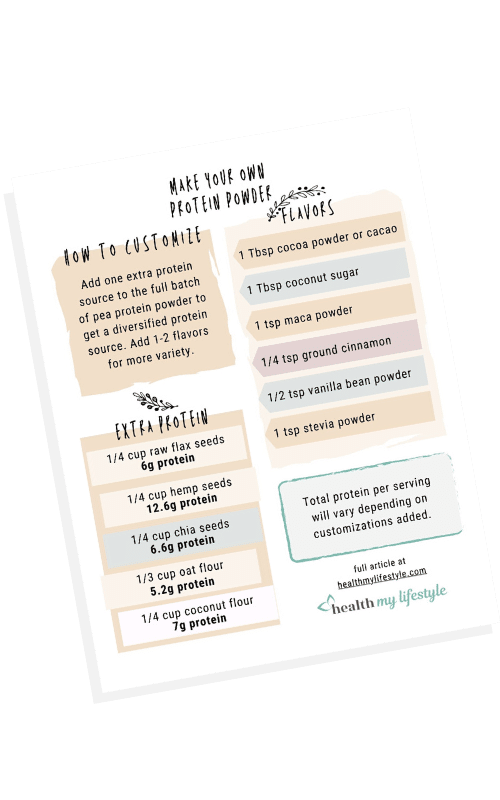
Here’s my favorite:
- 1/3 cup pea protein powder
- 1 tablespoon cocoa powder
- 1/4 teaspoon cinnamon
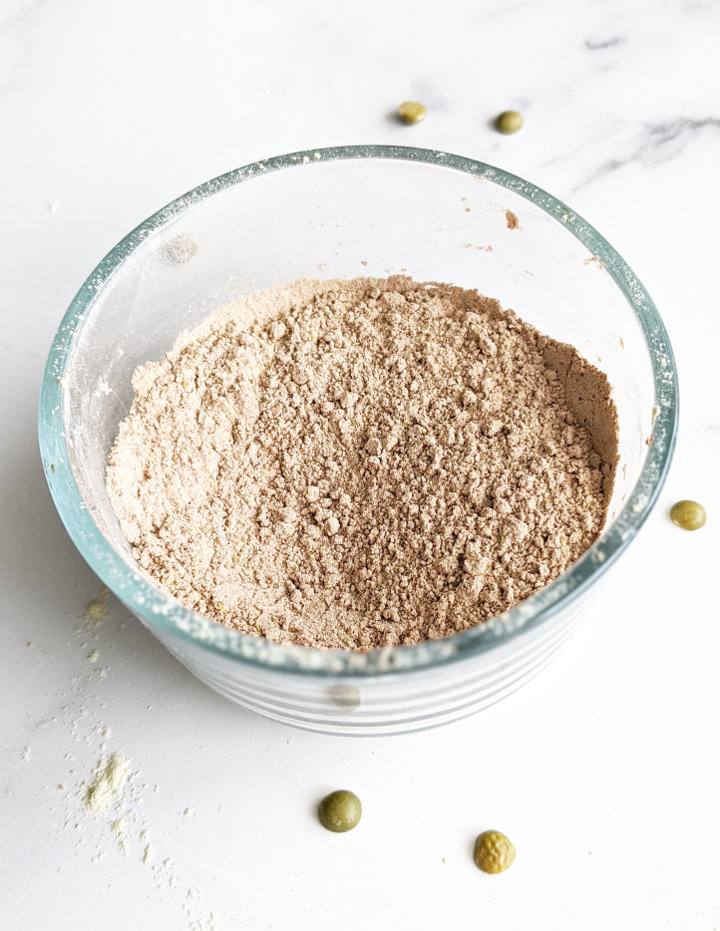
Add 4 Tablespoons of it to a smoothie with 1 cup frozen cherries, 1 banana, and 1 cup water or plant milk. It’s like a chocolate cherry black forest smoothie! Add more cocoa powder to make it even more chocolatey.
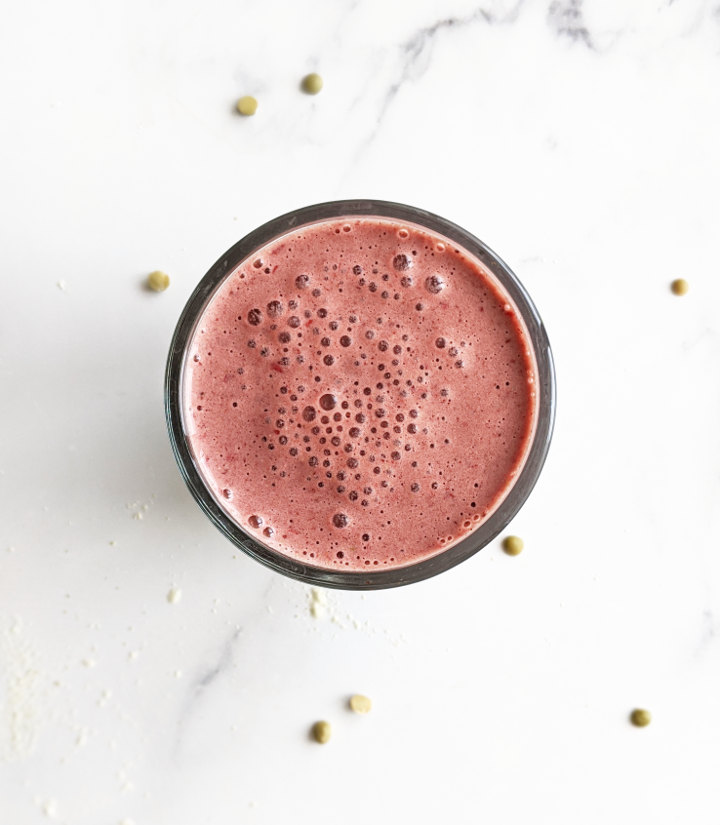
If you enjoyed this tutorial for making your own vegan protein powder please leave a comment below and give it 5 stars! Or on Pinterest (don’t forget to follow me!) you can now add pictures into reviews, too, and be sure to help me share on facebook!
If you’re looking for more easy, healthy recipes the Health My Lifestyle Meal Planner is full of them! You can easily narrow down exactly what you’re looking for with the extensive filtering options, plan out your week in seconds or grab a pre-made plan, track your calories and goals, and more! Try it for free! Check out the Meal Planner here.
Want to Save This Recipe?
Enter your email below and we’ll send it straight to your inbox! Plus, get weekly free recipes!
By submitting this form, you consent to receive emails from Health My Lifestyle.
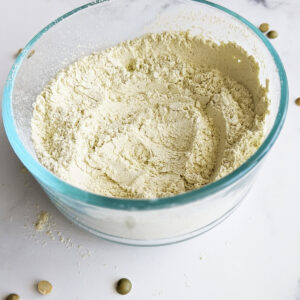
DIY Pea Protein Powder
Method
- Blender
Ingredients
- 1 cup split peas dry, uncooked
Instructions
- Place peas in a blender or food processor. I use a Ninja blender but any high-speed blender or food processor will do. Make sure whatever appliance you use is completely dry. You do not want any moisture in it or you will end up with a paste instead of a flour. Blend for around 3 minutes. Make sure any openings are covered while it's running so you don't have pea flour wafting out of it.
- Sift the processed peas over a bowl with a sieve or mesh strainer to separate the powder from any of the larger pieces. Reprocess the large pieces in your blender or food processor for another 3 minutes and sift again.
- Any leftover larger pieces can be ground using a coffee or spice grinder, or throw into a soup or stew so they don't go to waste. They're so small that they should cook quickly.
- Store pea protein powder in an airtight container in the refrigerator for up to a week or freeze for longer. See above article for how to add additional protein and flavor options to the powder.

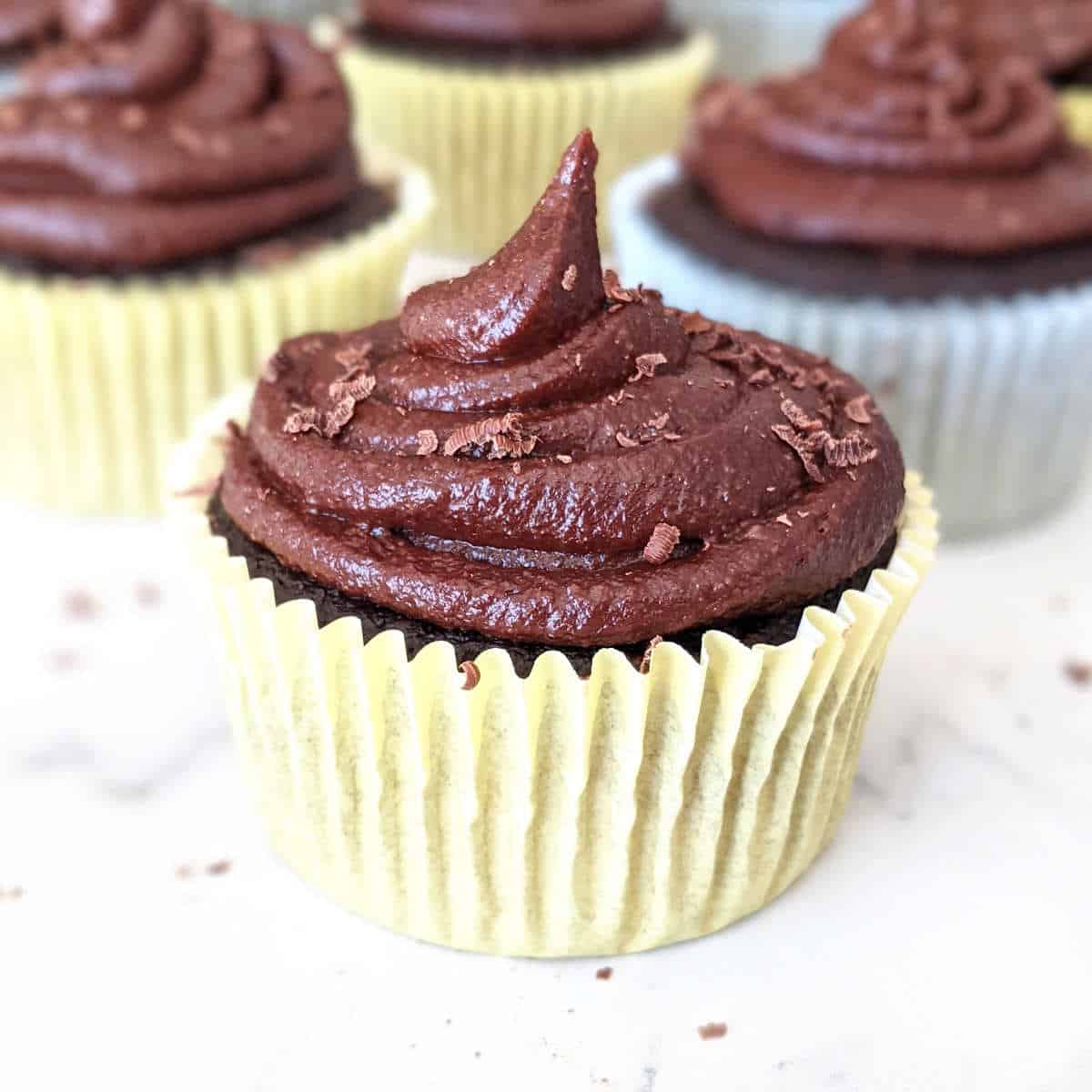
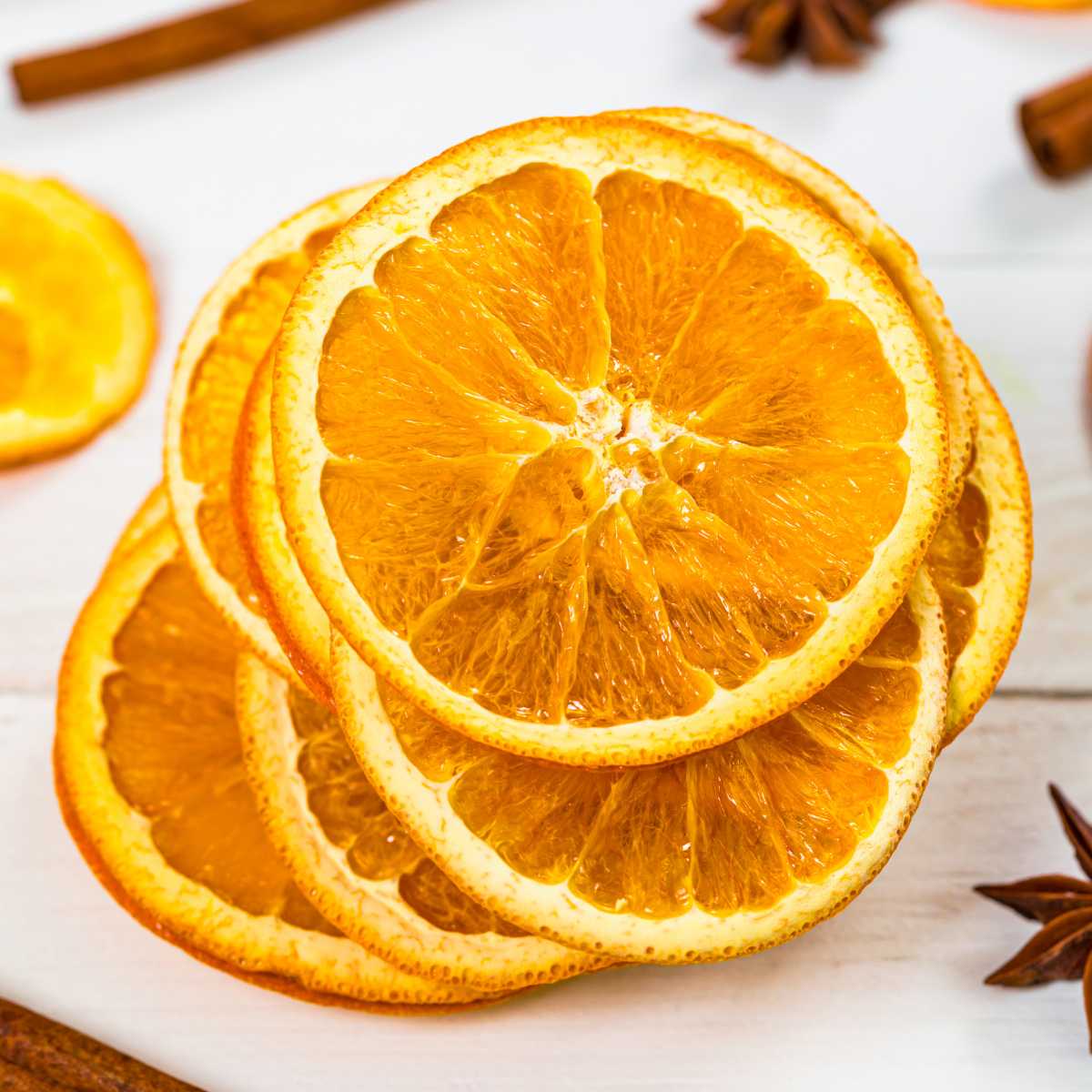

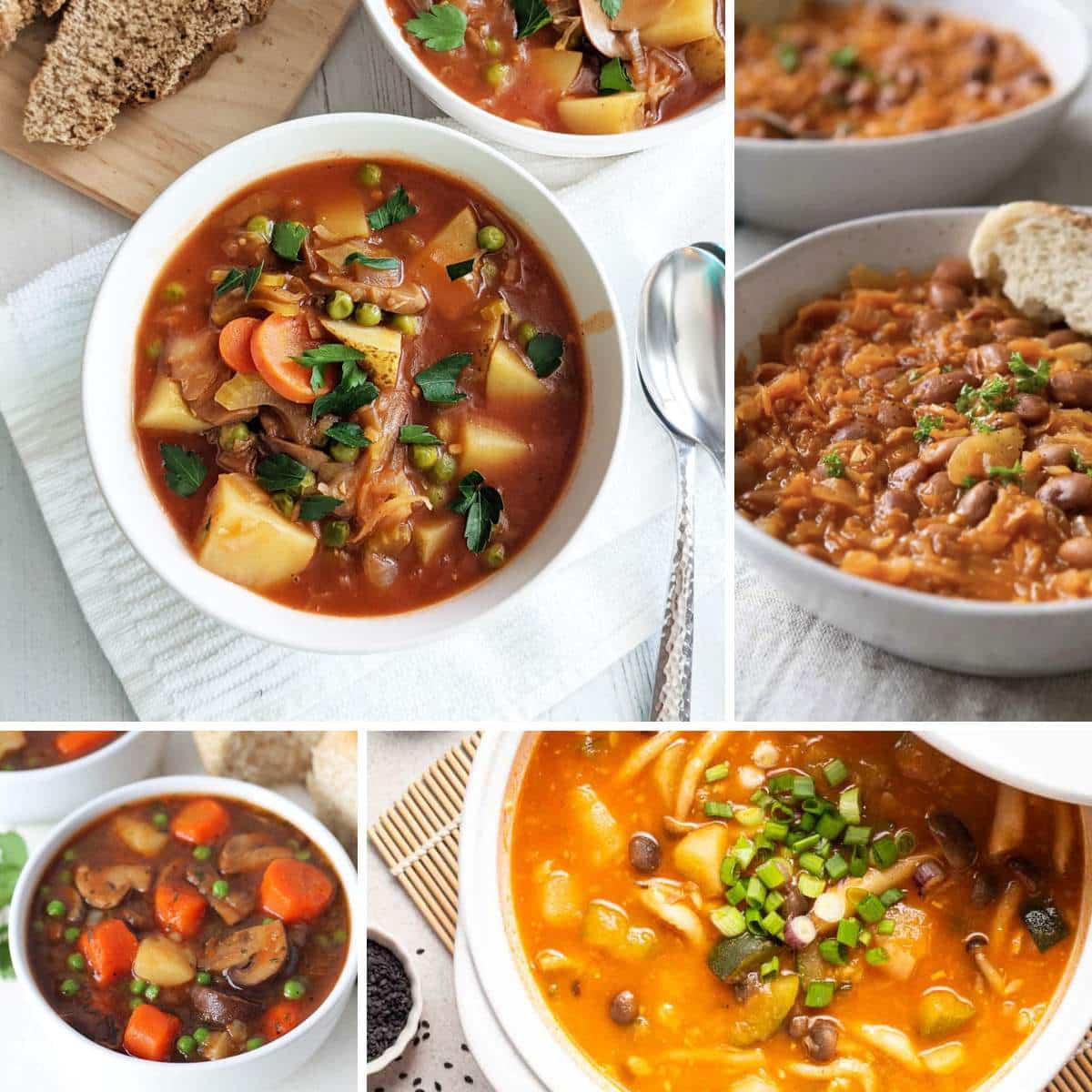
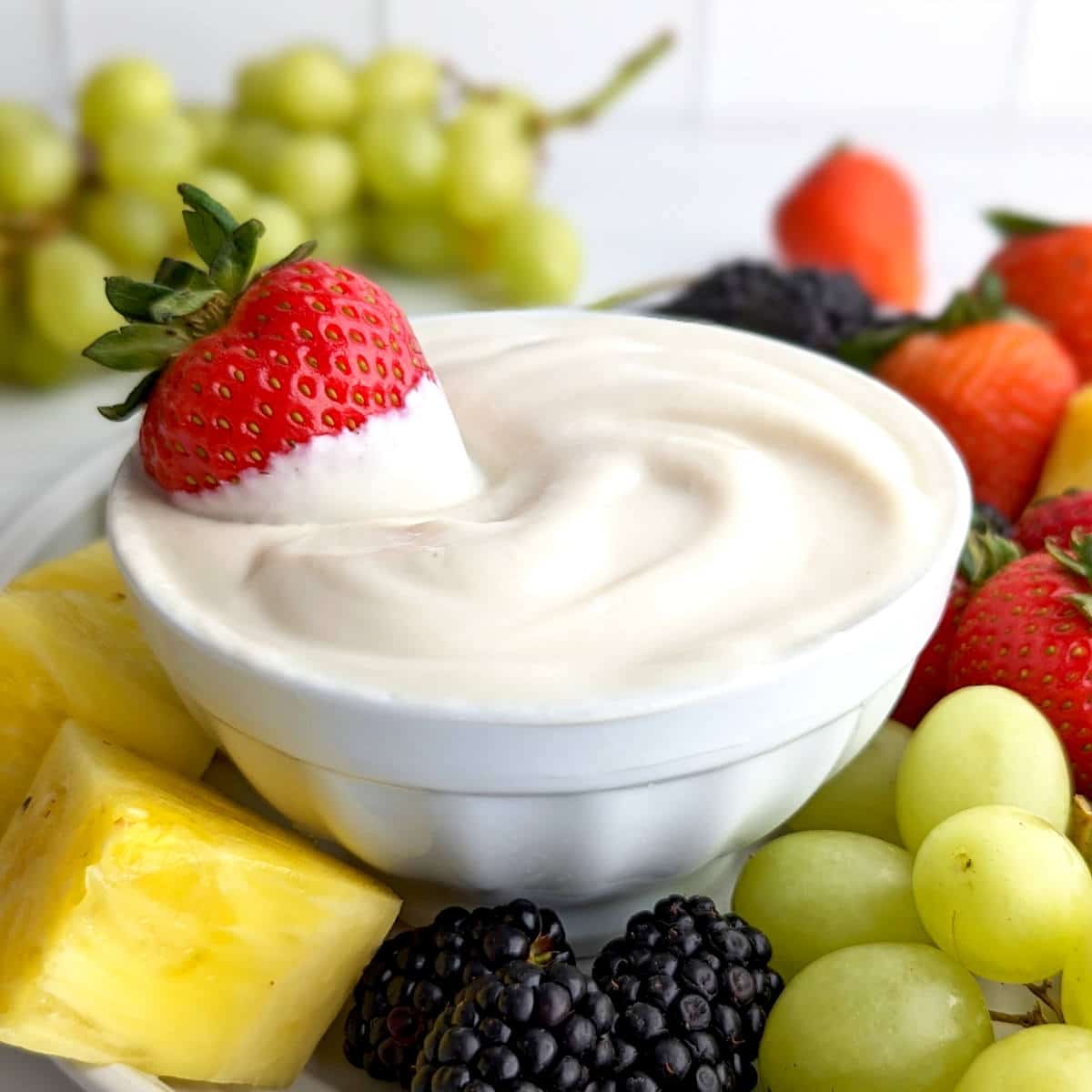
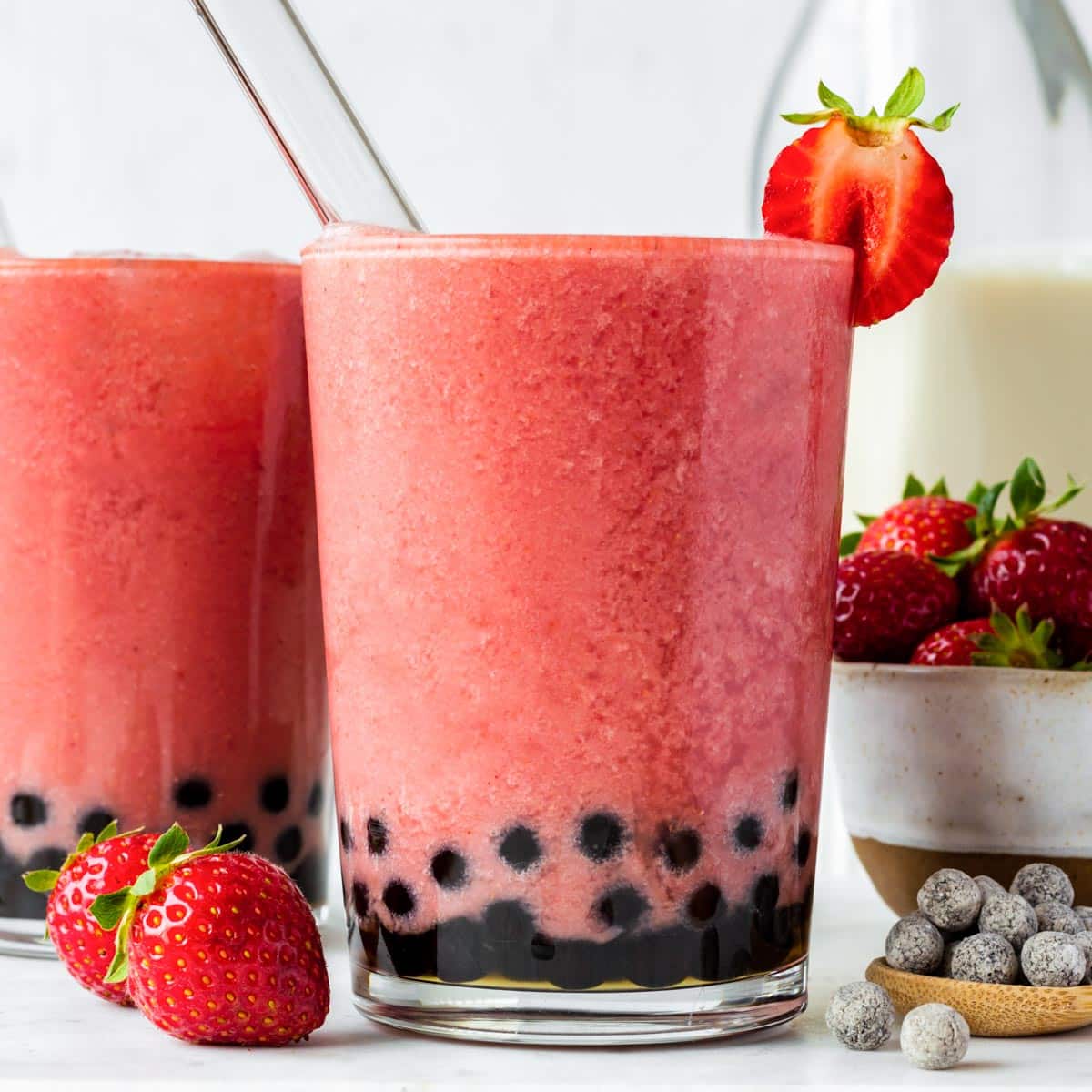
Isn’t it bad to eat legumes raw though? This would be fine used for baking, but not for putting in smoothies/other raw meals. In those cases, you should cook, dehydrate, then grind/blend, right?
Hi Madison! Yes, in general you shouldn’t eat raw legumes but there is a caveat. Here’s some information that I previously shared with another commenter:
“Lectins are naturally occurring proteins that are found in most plants. Some foods that contain higher amounts of lectins include beans, peanuts, lentils, tomatoes, potatoes, eggplant, fruits, and wheat and other grains. Some research seems to indicate that taking in large quantities of raw lectins could have negative health effects. The amount you’d need to consume each day to get to that level, however, is much higher than a typical diet would include.” Source: https://newsnetwork.mayoclinic.org/discussion/mayo-clinic-q-and-a-what-are-dietary-lectins-and-should-you-avoid-eating-them/
Split peas only contain a small amount of lectins compared to other legumes so for the average healthy person, they are not a concern unless eaten in large quantities. Source: https://www.hsph.harvard.edu/nutritionsource/anti-nutrients/lectins/
This is why I do not recommend consuming more than one serving a day of this homemade protein powder. Hope that helps!
Brilliant idea make your own and save heaps.
thank ou somuch foro this additional process i cant afford plant based protein powders, my health is failing, my doctor liked your recipe!! told me to try it, as anything would help me! willing to try, and love your detailed and comprehensive instructions!!! i already make my own oat/almond milks, will be trying this one, and the variations too!! i cant thank you enough!!
You’re so welcome! I hope you enjoy it 🙂
But you still have fiber (and carbs) from the flower. How do you at least remove fiber from peas?
The process of removing fiber from the pea protein powder is much more involved. This is just a simple process to make homemade protein powder. Most people don’t reach their recommended daily fiber requirements so I see the fiber as an added benefit 🙂
Fiber is absolutely required for a healthy lifestyle! Please don’t try to avoid it. As Rachel said, it is a benefit and I would consult your doctor if you are unsure about your dietary needs
I tried this, and the dried peas are actually too hard for my food processor! I’ve got a good strong processor that makes nut butters, so I’m wondering why the peas don’t break down? Are they too old?
Hi Andrea, double-check that you’re using split peas which are smaller and shouldn’t have an issue in a food processor. It could be that they’re too old if you’ve had them for a while. You could try soaking them, then allow them to thoroughly dry before processing to see if that helps.
thank you for the in-depth journey into split pea protein powder. great info on how to make it, use it, and all the various ingredients to add. all on one paste you’ve saved me from trawling the web for comprehensive info.
My pleasure! I’m so glad you found it helpful and comprehensive 🙂
Hello!
Can you tell me,
1 cup of dried split peas makes how much powder?
Thank you!
It makes about 1 cup of powder 🙂
So glad I found your site! We just decided the pea protein powder we usually use has gotten too expensive and are no longer purchasing it. So I got right up from reading your post and made a test batch of the protein powder then made a smoothie out of it and it was really quite good. I made the powder from : split peas, brown rice, dried stevia leaves, chia seeds, cacao powder. Then I incorporated these into the smoothie: Vanilla extract (didn’t want to use the $$ vanilla bean powder on a test) PB2 (Peanut butter powder minus most of the fat – -feeling like a treat) and a banana. I did notice a high flavor note of raw legume but I imagine that would easily be covered by adding some frozen fruit or some of my fruit powder. I do plan to do a test run of cooked, pureed, dehydrated, powdered peas but like you said – – that is a lot of steps if just using raw suffices. I would do this in small batches to last a couple months at a time because I expect the peas and rice ground up are more vulnerable to loosing nutritional content than intact.
So glad you like it, Dinah! Yes, more fruit helps to mask the legume flavor. And correct, once ground it doesn’t last as long so smaller batches are better. Enjoy!
So 11 grams of protein per 4 tablespoons?
Yo, this is great, but it’s a bit of a misnomer. This is not pea protein powder. You can buy pea protein powder which is approximately 80%-85% protein and contains very few carbs and very few fats. It has been concentrated and a lot of the pea has been processed out of it. I would call this pea flour. People using this method to make protein powder should be aware that this recipe makes more carbs than protein per scoop. Protein powder should only really be consumed by folks who are concerned about building and maintaining a large amount of muscle, other people can get their protein naturally from whole unprocessed foods.
Thanks, JP! Yep, you’re right, this does not extract the protein so you get all the benefits of the peas as mentioned in the article. This is just a handy and affordable alternative 🙂
agreed with JP! still great to know!
Hi. Can the pea protein powder be used to make pea milk? If so, what would be the powder/water ratio? I’ve tried the cooked split pea method but find it all too messy even though the end product tastes great. I’m hoping the powder/water with added vanilla/sweetener could work
I haven’t tried that before but I don’t see why not! I’ve made oat milk before with 1/2 cup rolled oats and 3 cups water so I would probably use a similar ratio for pea milk. Let me know how it goes!
super sciencey question incoming 😅 I’m planning on trying a vegan marshmallow recipe that requires pea protein powder, it’s used to substitute aquafaba and needs to be whipped up. Do you think this this recipe of ground up split peas will work? Thank you!
Hi Carrie! Since this isn’t your typical store-bought pea protein powder, I don’t think the results would be the same. Your best bet is to use pea protein powder from the store to ensure the marshmallows turn out properly, especially if it requires a flavored protein powder to mask the pea flavor.
Hi, just wondering do you wash and dry your peas first. When I do that to cook them, the water looks so dirty. I haven’t attempted any of my own bean flours for that reason. seems like so much work to wash and then basically dehydrate so they are dry again. Would love to hear your comment on that.
Hi Stacy, I usually just blend straight from the bag but sort them first to make sure there aren’t any stones in it. Rinsing is better since there could be some dirt on them but does take longer. I would rinse in a mesh strainer under cold water for one minute, then spread them out evenly in a single layer on a large baking sheet to dry. Place them in direct sun for a few hours or dehydrate in the oven on a low temperature until dry.
Thanks for sharing this recipe and technique. I’m wondering if one could use this to create the pea crumbles that are used in some of the newer vegan “meat” recipes and products. Do you know about this or how it is done? I’m thinking perhaps similar to how chickpea “tofu” or wheat crumbles where they make a dough and then steam it? Asking in case you may have already tried this or know where I can find more information. All I’ve found so far is where to buy pea crumble products. Thanks